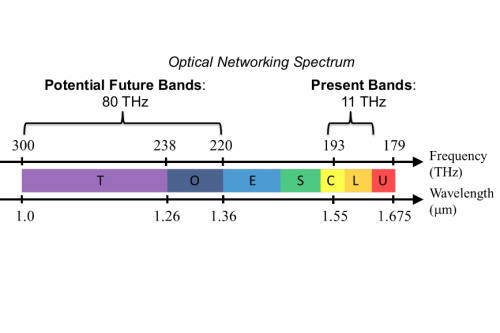Researchers in the UK and Japan unlocked 80THz of fibre-optic bandwidth that will enable future exascale data centres and transform 5G networks.
The collaboration between the University of Bristol’s Department of Electrical and Electronic Engineering, Keio University and numerous Japanese industrial partners, have designed, developed and prototyped an all-optical router that can unlock 80 THz of bandwidth across a newly defined frequency band named T-Band (thousand band) and O-Band (original band). The adjacent bands span from 1.0 μm (300 THz) to 1.36 μm (220 THz) and are able to support 1600 channels at 50 GHz spacing.

The technology fabricated and tested is based on cascaded arrayed waveguide gratings (AWGs) and is designed to potentially construct a 1600 x 1600 wavelength router that can guide data through. This uses quantum dot chips for the light sources which were originally developed by NICT in Japan.
“The technology and system proposed and prototyped will unlock the new frequency band and networks to support future exascale data centres, ‘zero-latency’ tactile optical internet, internet of everything, smart cities, fog computing and big data infrastructure among others," said Dr Georgios Zervas, Senior Lecturer in Optical and High Performance Networks in the Department of Electrical and Electronic Engineering.
A single passive optical system can interconnect over one million end points such as, broadband home users, IoT devices, data centre servers, while offering at least ten Gb/s per end point. It is also future proof since it’s transparent to any communication signal and it can also potentially consume zero power due to its passive nature says Hiroyuki Tsuda, Professor of Faculty of Science and Technology at Keio University. “The enabling technologies for the new frequency band are the quantum dot based optical devices and the silica planar lightwave circuits designed for the new band," he added.

No comments:
Post a Comment